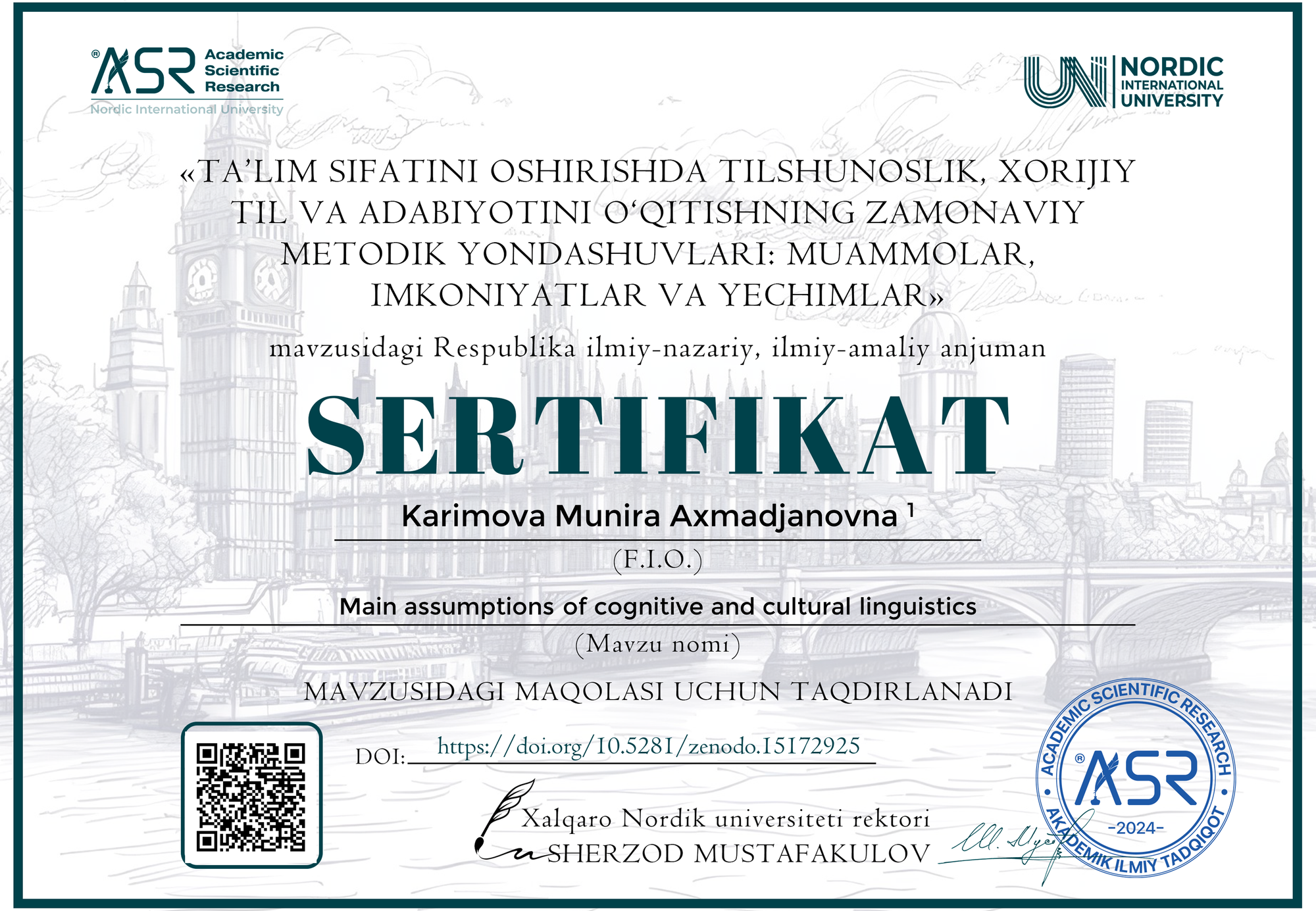Karimova Munira Axmadjanovna 1
DOI: https://zenodo.org/records/15172925
Google scholar: https://scholar.google.com/scholar?hl=ru&as_sdt=0%2C5&q=%22MAIN+ASSUMPTIONS+OF+COGNITIVE+AND+CULTURAL+LINGUISTICS%22&btnG=
Zenodo community: https://zenodo.org/records/15172925
Nordic_press journal: https://research.nordicuniversity.org/index.php/nordic/article/view/2246
MAQOLANI YUKLAB OLISH
SERTIFIKATNI YUKLAB OLISH
REVIEW:
The article titled “Main Assumptions of Cognitive and Cultural Linguistics” by Karimova Munira Axmadjanovna presents a well-structured and thematically relevant study within the fields of linguoculturology, cognitive linguistics, and intercultural communication. The paper explores the foundations, evolution, and methodological framework of linguocultural studies, particularly highlighting the relationship between language and national culture.
The author effectively discusses the emergence and development of linguoculturology as an interdisciplinary science that merges language studies and cultural anthropology. The reference to notable scholars such as V. Maslova, A. Wierzbicka, and V. Telia provides theoretical depth, while the analysis of conceptual approaches and classifications of linguistic and cultural layers (e.g., literary, popular, dialectal, argot) adds empirical richness.
The paper is commendable for:
Offering a comprehensive overview of the field's key concepts;
Clearly describing the goals and scope of linguoculturology;
Applying comparative and conceptual methods to define cultural layers in language use;
Presenting the field as a vital bridge between linguistic theory and cultural identity.
The classification of linguoculturology into five subfields is both informative and academically sound, giving readers a nuanced understanding of the discipline’s breadth.
Points for Enhancement:
Some linguistic formulations and spelling (e.g., “analitical” instead of “analytical”, “comparisonable” instead of “comparative”) could be corrected to meet standard academic English norms.
The methodology section could benefit from more detailed examples or case studies to strengthen empirical support.
While the article references key sources, integration of contemporary data or more examples from real-world linguocultural interactions would enhance its practical relevance.
Conclusion:
Overall, this paper offers a valuable contribution to the theoretical understanding of linguoculturology and cognitive-cultural linguistics. It successfully highlights the intersection between national mentality, linguistic form, and cultural representation. The article is suitable for publication in academic journals focused on language studies, cross-cultural communication, and cognitive linguistics.



